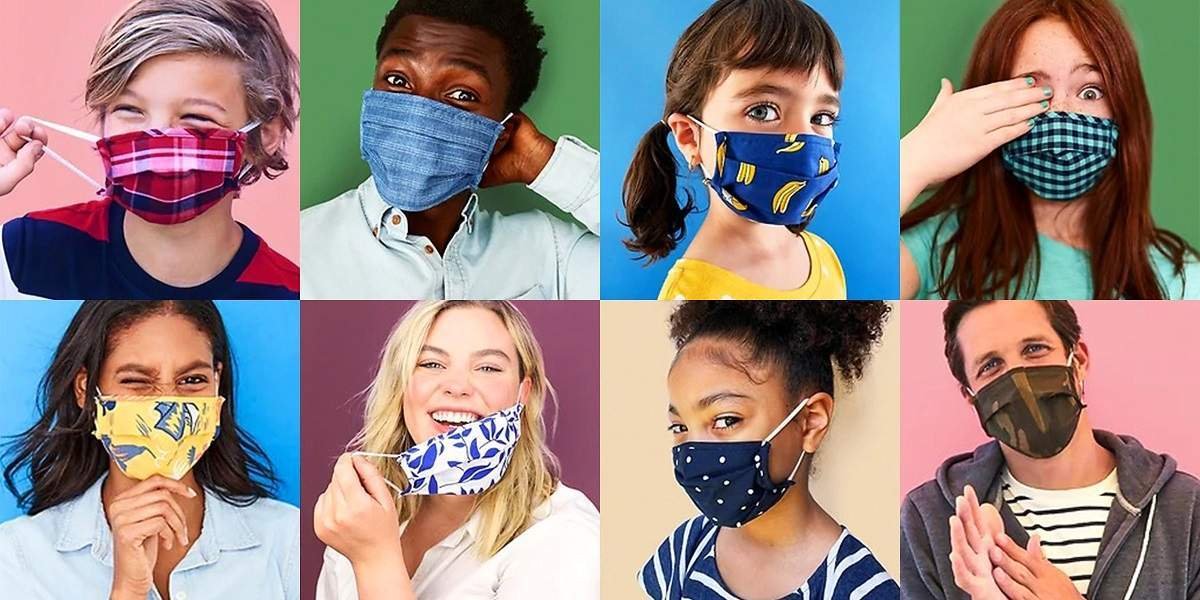A Brief Guide To Choosing The Right Mask
 In the year 2020, COVID-19 is one of the biggest and deadliest threats that one can face. Not just that, there are also other airborne allergens that can trigger allergies, asthma, and more such problems for people who are sensitive to such contaminants.
In the year 2020, COVID-19 is one of the biggest and deadliest threats that one can face. Not just that, there are also other airborne allergens that can trigger allergies, asthma, and more such problems for people who are sensitive to such contaminants.
It is possible to keep indoors clean and free from contaminants with cleaning products, air purifiers, and more. However, when speaking of outdoors, it is hard to control the pollution in the air and avoid exposure to the contaminants in the air.
This is where wearing an Anti-dust face mask, and others have become a necessity. Wearing masks can help you breathe in uncontaminated air and avoid indoor chemical fumes, particles, and especially dust.
During winter months, many people with asthma wear masks to avoid exposure to the cold air, which can trigger their asthma. For protection against the flu and the novel COVID-19 Virus, we are going to break down some essential facts and facets to make sure you are able to choose the right type of mask for you.
This article is a guide that can help you to understand the difference between masks and their function in providing protection against airborne particles.
A guide to buying masks—for protection against airborne particles
The air we breathe is polluted all year round. Not just that, even in the springs, the trees and flowers bloom, shedding trillions of pollen in the air, which are also a cause of allergies for people.
In summers, the process continues while there are also wildfires making an impact in certain parts of the country. As for the falls and chilly winters, the months are marked by ragweed and cedar pollen, as well as the flu and virus pathogens on the air.
To avoid getting affected by the pathogens, it is crucial to wear masks while working, exercising, or simply enjoying outside. It can help filter the air and block the tiny particles, which can otherwise result in allergy.
According to the CDC, N95 masks can help in spreading Avian, H1N1, Enterovirus, and other kinds of flu viruses.
Allergy respirators—for protection against airborne vapors, fumes, and smoke
Another way a mask can help is by filtering out the smell, odor, chemical vapors, and fumes which are harmful to humans if breathed in. these types of pollutants are considerably common indoors, such as the pollutants from tobacco smoke, vapors of strong chemical cleaners, perfumes and more.
Conversely, outdoor air pollution such as smoke of wildfires, common vapor pollution, vehicle smoke, and more are the allergens that can trigger asthma and other viruses harmful to human health.
Trapping these kinds of contaminants requires a different filter containing activated carbon or charcoal that are commonly found in most air purifiers. The carbon absorbs the odor and prevents it from passing through the filter.
Factors to consider when buying the facemask
1. Filter types
The type of filter you choose is determined by several factors. The most important among them is what is it that you are trying to filter? There are two basic categories of filters when it comes down to it: particles and gas fumes. Particle filtration is among the most common type of masks required by the user. You must look for masks with NIOSH ratings on them that rates the test filtration of the particles. For example, the N95 face mask filtrates about 95% of all particles. This type of mask is also recommended by the CDC against the minimum protection from flu and other viruses.
2. Allergy mask filtration rating
Ratings for a mask filter is important as all masks that are available in the market are rated according to the level and type of filtration they offer. Not just that, they also numbered according to their size and how well they dissipate heat. Not just that, you must also consider the customer rating for various masks when purchasing them.
3. Mask styles
Some masks are called respirators, and others are called masks. The difference between them: respirators have a valve on them that allows the moisture and water vapors in the air you breathe out to escape. In contrast, masks are simply covering your face, which allows you to breathe filtered air. Generally, respirators are used more for an industrial setting rather than for usual wearing. However, in the situation of Pandemic, the common individuals are also opting for respirators to avoid getting infected from the novel COVID-19 virus.
4. Disposable masks vs. replaceable masks
Certain masks are disposable, and others are designed to be used a couple of times before being discarded. A semi-disposable mask consists of two parts: the filter and the body. The body of the mask is made from a durable material such as non-latex rubber and neoprene, which can be washed by hand to be used again. It also comes with replaceable filters and is worn for industrial use, such as by researchers and factory labor.
5. Longevity
How long does the filter of the mask last? It can depend on a variety of factors, such as the environment of the place, the type of activity you are engaged in, and your storage practice. All of these factors play a great role in how long the filter of the mask works. Generally, the mask of the replaceable filter can last up to 50 to 60 hours of use. On the other hand, disposable masks should be discarded after a single-use.
7. Price
The prices of every mask vary according to their type and use. For example, a simple N95 mask costs not more than a buck, but when it comes to masks with replaceable filters, they can range up to $50 to $60. The difference in the prices also depends on the durability of the mask. Not just that, most masks costing more can be washed by hands. On the other hand, less expensive masks are usually meant for single use.
Now that you are familiar with all the factors contributing to making the right choice make sure to make the right choice to stay healthy and safe from the contaminants and deadly COID-19 Virus.






